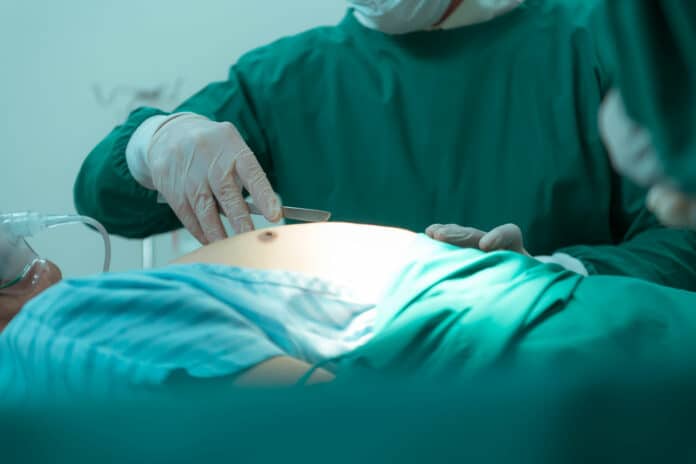Heart transplantation is an effective treatment for refractory, severe heart failure but is limited by donor organ availability. Heart transplantation (HT) is reserved for patients with few co-morbidities and end-stage heart failure (ESHF) and resistant to conventional treatment. It is the last line of defense for these patients. It significantly improves their prognosis and quality of life.
Thoraco-abdominal normothermic regional perfusion (taNRP) enables in-situ reperfusion of the DCD heart. This study aims to evaluate the clinical outcomes of DCD donor hearts recovered and transplanted from taNRP donors.
Donor-Chosen Donor(DCD) involves resuming local circulation to the heart, lungs, and abdominal organs of individuals whose hearts have stopped beating for at least five minutes and have been declared dead by circulatory criteria.
In 2021, 54 countries reported 8,409 heart transplants to the Global Observatory on Donation and Transplantation (GODT), while 21,935 patients were on a heart waiting list, of which 1,511 died while waiting and many more became too sick to receive a transplant.
Heart transplants from DCD donors have just become a clinical reality globally because of years of study at Cambridge. The first heart transplant at the Groote Schuur Hospital in Cape Town in 1967 came from a DCD donor.
John Louca, a final year medical student at Gonville & Caius College, University of Cambridge, and the study’s first author, said: “Heart transplants are the last bastion for patients with end-stage heart failure, and patients who receive a transplant live on average a further 13 to 16 years. However, many patients will die before an organ becomes available. Hence, we urgently need to find ways to increase the suitability of donor organs.”
Donor-Chosen Donor (DCD) refers to patients who sadly have a non-survivable sickness and donate their organs. These patients are frequently dependent on ventilation while unconscious in intensive care. When the patient’s family agrees to organ donation, the process is initiated after thorough conversations between doctors, specialized nurses, and the patient’s family.
Transferring non-beating hearts to a portable organ Care System (OCS) device is a step in the DCD heart transplant procedure. The largest and most experienced DCD heart transplant center in the world, Royal Papworth Hospital NHS Foundation Trust in Cambridge, invented this procedure. Organ Care Systems are expensive, costing approximately US$400,000 per machine and an extra $75,000 for consumables.
Thoraco-abdominal normothermic reperfusion (taNRP) is an alternate strategy that is significantly more affordable. It is estimated to cost roughly $3,000 to achieve this, which involves perfusing the organ while it is still inside the donor’s body.
According to new research, more donated hearts may be suitable for transplantation if they are kept functional within the body for a short time after the donor’s death.
In a new study, an international team of clinical scientists and heart specialists from 15 major transplant centers worldwide examined the clinical outcomes of 157 DCD donor hearts recovered and transplanted from donors undergoing taNRP. They discovered that using taNRP significantly increased the donor pool, increasing the number of heart transplants conducted by 23%. Survival rates for DCD and DBD cardiac transplants were equal.
Professor Ashish Shah, Head of the Department of Cardiac Surgery at Vanderbilt University Hospitals, Nashville, USA, said: “Heart transplantation has been and always will be a unique international effort. The current study is another example of effective international collaboration. It opens a new frontier, not just in transplantation, but in our basic understanding of how all hearts can be rescued.”
This study discovered that using taNRP to guide DCD heart transplantation can produce outcomes that are comparable to the gold standard and increase the number of hearts accessible for transplant in a way that supports the sustainability of healthcare systems. When compared to direct procurement, the heart’s warm ischemia time, or the period during which it was not receiving oxygenated blood, was shorter. Also, the median average time was 16.7 minutes, much less than the 30 minutes associated with permanent damage to the heart cells.
This method also allows medical teams to sustain many organs simultaneously, such as the liver, pancreas, and kidneys, without needing multiple organ-specific external machine perfusion devices. This reduces both complexity and expenses.
Dr. Beatriz Domínguez-Gil, Director General of the National Organisation of Transplantation in Spain, said: “The results of this collaborative study bring hope to thousands of patients in need for a heart transplant every year throughout the world. Its findings reveal that DCD heart transplantation based on taNRP can lead to results at least similar to the gold standard and increase hearts available for transplantation in a manner that contributes to the sustainability of healthcare systems.”
The result shows that In-situ preservation of DCD heart can increase the donor pool by 30%, reduce waitlist times and mortality, and improve organ utilization.
Journal Reference:
- Louca, J., Öchsner, etal. The international experience of in-situ recovery of the DCD heart: A multicentre retrospective observational study. EClinicalMedicine. 10.1016/j.eclinm.2023.101887
